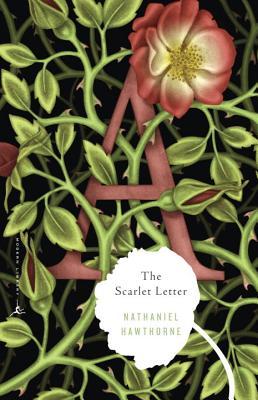Nowadays when we all proudly bestow upon ourselves the title “a cinephile” so idly and unpremeditatedly, regardless of whether we actually are knowledgeable in the domain of film creation and production, it comes as no surprise that we have grown accustomed to associating many objects, words of wisdom, characters and symbols with the celluloid. Movies’ unavailing attempts to contrive a contemporary interpretation of a classic book have done nothing but sully and impugn the novelty and profoundness of all those works which have earned a genuine homage throughout the centuries. “The Scarlet Letter” is an epitome of a magnum opus, marred by its resettlement in a 21st century high school, ravaged by hormones, intrigues and trifle enmities of which only horny, egotistic teenagers (yeah, I realize I am partly offending myself saying this) are capable.
As much as I loved “Easy A” when I saw it a couple of years ago, never having heard of the existence of such a man as Nathaniel Hawthorne, I now think it downgrades the essence of “The Scarlet Letter” and obliterates its light motif. I could live with that was it not for the degradation of Hester Prynne – one of the strongest female characters I have encountered in my reads. The film despicably portraits her as a purported slut, who has been cast out by society for her licentiousness. However, if you care to peruse the book, you would comprehend the absurdity of the analogy between Hester and Olive.
The novel begins at the prison door in June 1642 in Massachusetts. The disgraced and ostracised Hester Prynne, carrying her newborn child ascends the steps to the ominous scaffold under the glaring, judging eyes of the populous, as she proudly wears the dreaded scarlet letter, embroidered on her bosom. No matter how passionately she is implored, how severely she is ordered she doesn’t divulge the culprit who has perpetrated adultery alongside her. The hours she spends in the spotlight of ignominy, rendered under the scorching blaze of aspersions, innuendos and disapproval of her own bygone friends, neighbours and acquaintances, unravel her indefatigable character and determine the way her life is going to unravel in the future.
Even though the story follows the despair and toilsome turmoil of her heart only in the beginning, it soon expands and reaches down to the heart of a stooped, deformed man, who is making his way through the crowd, never averting his eyes from the voluptuous figure on the scaffold and her illicit girl Pearl; and above to a tremulous, wane, feeble creature with his hand constantly over his heart. The roles of these two hapless men are beautifully implied as the novel weaves and scrutinizes what bonds them irrevocably together – sin and guilt.
“The sainted minister in the church! The woman of the scarlet letter in the market-place! What imagination would have been irreverent enough to surmise that the same scorching stigma was on them both?”
There isn’t a dearth of bedazzling and fascinating themes in “The Scarlet Letter”. Hester’s exquisite firmness of character, her unfailing independence of society, her free thought and moral strength are some what a precursor to feminism. She acts as a mediator between two extremities – the wronged one whose own penchant for bitter vengeance depraves him and the other one culpable for the scarlet letter whose guilt-stricken conscience induces him to savage repentance. “It is remarkable, that persons who speculate the most boldly often conform with the most perfect quietude to the external regulations of society. The thought suffices them, without investing itself in the flesh and blood of action. So it seemed to be with Hester. Yet, had little Pearl never come to her from the spiritual world, it might have been far otherwise. Then, she might have come down to us in history, hand in hand with Ann Hutchinson, as the foundress of a religious sect. She might, in one of her phases, have been a prophetess.”
I also relished the picturesque depictions of multitudinuous landscapes and shafts of light that vividly reverberated and reflected the inner world of the characters. “Mother,” said little Pearl, “the sunshine does not love you. It runs away and hides itself, because it is afraid of something on your bosom. Now, see! There it is, playing, a good way off. Stand you here, and let me run and catch it. I am but a child. It will not flee from me; for I wear nothing on my bosom yet!” The characters are not merely delineated by their countenance, mien and demeanour but by their reaction to nature and vice versa which in turn makes them more authentic personae.
It is worth mentioning that the novel was written in 1850 although it transpires in the 17th century. Nathaniel Hawthorne outstandingly describes the mindset of the 17th century. He emphasizes the fidelity of people to religion, the common social hierarchy and the attitude towards sin and transgression. He makes an unequivocal distinction between what is viewed as complicity in his days (counts for today, too) and and in Hester’s days. As time elapses, our minds become inured to what were once deemed radical notions. Despite living in a world where we could choose whom to marry, dress in order to express ourselves; where women can vote and create and be as independent and auspicious as men; where unfaithfulness is commercialized via Rihanna’s discography; where the sky is the limit; we adhere to stronger regulations, pertaining to the placidity and safety of our lives. No longer do we only chastise others on moral grounds – we upbraid and punish them, as well,when they go astray and break the written laws. There is no ambivalence in the true nature of right and wrong, as there was in the 1640s. “It remarkably characterized the incomplete morality of the age, rigid as we call it, that a license was allowed the seafaring class, not merely for their freaks on shore, but for far more desperate deeds on their proper element.”
Reading the novel made me proud of our race, of women and men equally. We are marvellous creatures for we strive to tame and trammel the vivacity of our free, wild souls. We crave for valour and liberty but we don’t let ourselves stray too far away from the familiarity and rationality of conservatism. We learn from our mistakes and learn to bear the aftermath of our mistakes. On a crimson background of paganism, world wars, malicious decimation, glows the white, pure and impeccable sense of penance and our unfailing will to be better humans.
“On a field, sable, the letter A, gules.”

